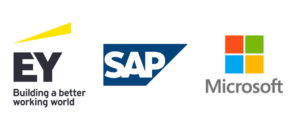Neurodiversity in the STEM Workforce
By Jodi Asbell-Clarke
In the early 2000s, STEM companies started taking note of particular strengths among autistic people for certain types of detail-oriented, repetitive tasks. In 2004, a Danish IT specialist named Thorkil Sonne founded a consulting company for software testing and quality control called Specialisterne (Danish for “The Specialists”) where approximately 75% the employees are autistic. Since the start of Specialisterne, numerous global STEM companies including Microsoft, SAP, and EY have initiated similar neurodiversity hiring programs. For these companies, it is all about the talent. Their companies see neurodiversity as a competitive advantage.
By changing their hiring practices and expectations of what made a good employee, many STEM companies realized that not only were they able to broaden their employment pool, but also some neurodiverse employees turn out to be very, very good at their jobs, better than anyone the company thought they would be able to hire.
In complex STEM fields such as cybersecurity, companies seek candidates with highly detailed pattern recognition, a skill that is shown in research to be prevalent with autism. Good software engineers are often systematic, methodical, and meticulous visual thinkers. They may enjoy dwelling in the minute details of a problem.
STEM companies are not only interested in detail-oriented workers for cybersecurity, programming, and quality assurance, they are also seeking creative people with a fascination with new technology and an eagerness to introduce new and disruptive ideas. In STEM companies’ quest for constant innovation, neurodiversity of their workforce enables them to include people and ideas from the edges. Divergent thinking can help companies think outside the box, which can lead to places they wouldn’t have gotten otherwise. This has led to recruitment from a larger pool of neurodivergent problem solvers, including people with ADHD, dyslexia, and the multitude of other differences that often fall under this heading.
Harnessing the creativity, systems thinking, and persistence of neurodiversity has proven so successful for STEM companies that they are changing the landscape of the workforce. One of the ironic challenges they are now facing is finding enough neurodivergent applicants. Because a professional career has not seemed possible to many learners who have struggled in school, or because the system that educated them didn’t provide them with the confidence and agency to find a career, many potential employee candidates may consider themselves unemployable so they are not looking to be hired. Companies find neurodivergent employees are often their most productive employees. They only wish they had more like them.

“EY is a company of high performers—any type of obstacle or barrier results in a conduit of innovation. We want people who are creative and ingenious in overcoming barriers, and that leads us to neurodiversity.”
-Tammy Morris, The Neurodiversity Center of Excellence Leader for EY Canada
In the early 2000s, STEM companies started taking note of particular strengths among autistic people for certain types of detail-oriented, repetitive tasks. In 2004, a Danish IT specialist named Thorkil Sonne founded a consulting company for software testing and quality control called Specialisterne (Danish for “The Specialists”) where approximately 75% the employees are autistic. Since the start of Specialisterne, numerous global STEM companies including Microsoft, SAP, and EY have initiated similar neurodiversity hiring programs. For these companies, it is all about the talent. Their companies see neurodiversity as a competitive advantage.
By changing their hiring practices and expectations of what made a good employee, many STEM companies realized that not only were they able to broaden their employment pool, but also some neurodiverse employees turn out to be very, very good at their jobs, better than anyone the company thought they would be able to hire.
In complex STEM fields such as cybersecurity, companies seek candidates with highly detailed pattern recognition, a skill that is shown in research to be prevalent with autism. Good software engineers are often systematic, methodical, and meticulous visual thinkers. They may enjoy dwelling in the minute details of a problem.
STEM companies are not only interested in detail-oriented workers for cybersecurity, programming, and quality assurance, they are also seeking creative people with a fascination with new technology and an eagerness to introduce new and disruptive ideas. In STEM companies’ quest for constant innovation, neurodiversity of their workforce enables them to include people and ideas from the edges. Divergent thinking can help companies think outside the box, which can lead to places they wouldn’t have gotten otherwise. This has led to recruitment from a larger pool of neurodivergent problem solvers, including people with ADHD, dyslexia, and the multitude of other differences that often fall under this heading.
Harnessing the creativity, systems thinking, and persistence of neurodiversity has proven so successful for STEM companies that they are changing the landscape of the workforce. One of the ironic challenges they are now facing is finding enough neurodivergent applicants. Because a professional career has not seemed possible to many learners who have struggled in school, or because the system that educated them didn’t provide them with the confidence and agency to find a career, many potential employee candidates may consider themselves unemployable so they are not looking to be hired. Companies find neurodivergent employees are often their most productive employees. They only wish they had more like them.

“EY is a company of high performers—any type of obstacle or barrier results in a conduit of innovation. We want people who are creative and ingenious in overcoming barriers, and that leads us to neurodiversity.”
-Tammy Morris, The Neurodiversity Center of Excellence Leader for EY Canada

7/19/23
AuthorJodi Asbell-Clarke leads the EdGE at TERC team, a research and development group exploring the intersection of STEM and neurodiversity. Her academic background includes an MA in Math, an MSc in Astrophysics and a PhD in Education.
SummaryA quick introduction to the benefits of neurodiversity in the STEM workforce, including hiring practices and stigmas faced by job seekers.
Share This Page: